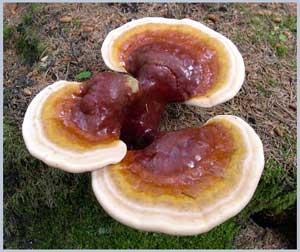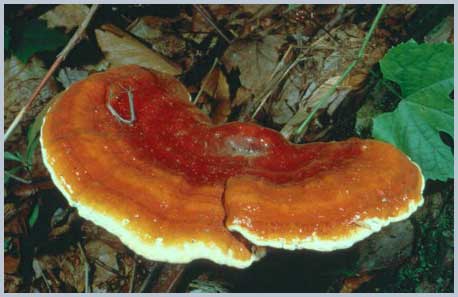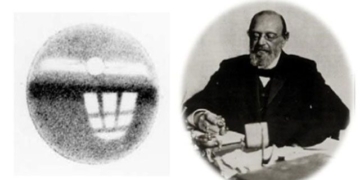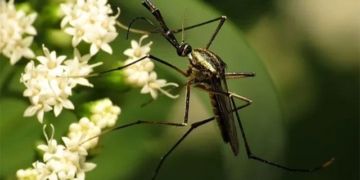Reishi, also known as Lingzhi or “divine mushroom,” is not actually a grass but a type of mushroom from the Ganoderma family. It typically grows on decaying wood or the roots of broadleaf trees in mountainous regions.
 |
(Photo: brockenpilz) |
Reishi consists of mycelium and fruiting bodies, with the fruiting body being the primary part used for medicinal purposes. The mushroom has a round cylindrical stem and an oval cap that features concentric rings, which indicate the age of the mushroom. When young, Reishi is creamy white, transitioning to a shiny reddish-brown as it matures. The underside of the cap is composed of a porous surface that is either white or light brown. Upon maturity, the mushroom releases numerous brown spores, which can develop into mycelium and eventually grow into fruiting bodies under favorable conditions.
Reishi is used as a health supplement, with a taste that is slightly sweet and bitter, and it is known for its warming properties. It has effects that nourish qi (energy) and blood, calm the heart, relieve stress, reduce coughs and asthma, and can be utilized to treat conditions such as neurasthenia, hypertension, heart valve disease, high cholesterol, chronic bronchitis in the elderly, wheezing in children, and leukopenia.
The chemical composition of Reishi primarily includes amino acids, proteins, fungal lysozyme, various sugars, alkaloids, vitamins B2 and C, as well as mannitol and trehalose.
Currently, Reishi has been processed into pill and injection forms, used to treat asthma, cough, hypertension, neurasthenia, and insomnia, with very noticeable effects.

(Photo: mushroomthejournal)




















































